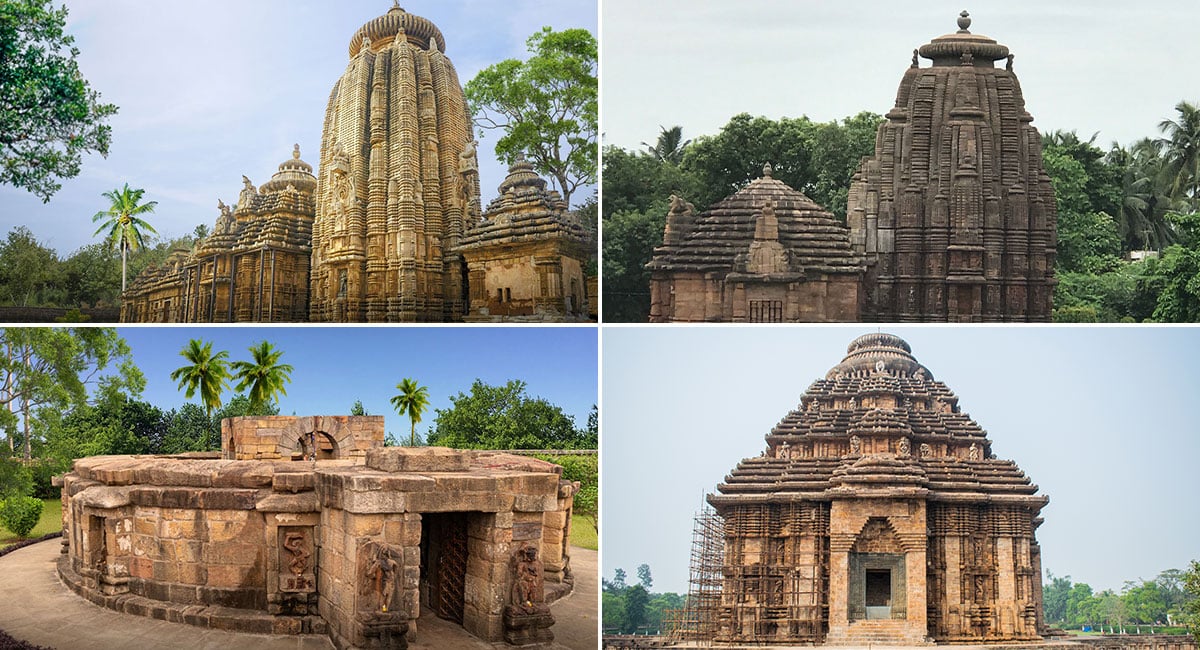The City of Temple – A Journey Through History
The eastern Indian state of Odisha is well known for its spiritual vitality, historical significance, and rich cultural heritage. Among the many reasons it stands out, one of the most prominent is its title as the “City of Temple.” The state is home to some of India’s most ancient and exquisite temples, each with its unique architectural style and spiritual importance. But why is Odisha specifically called the “City of Temple”? To answer this, we must delve into the history, culture, and religious traditions that have shaped this moniker.
Historical Roots of Odisha’s Temple Culture
The tradition of temple building in Odisha dates back to ancient times. The Mauryas constructed the earliest known temples in the region during the 3rd century BCE. However, under the rule of the Kalinga dynasty (which ruled Odisha from around the 4th century CE), the state became a hub for temple construction. People often regard this era as the golden age of Odisha’s religious and cultural expansion.
Historically located in the coastal plains of present-day Odisha, the Kalinga region had a long-standing tradition of spiritual and religious practices. The state witnessed the emergence of Hinduism, Buddhism, and Jainism, contributing to the growth of temples across the land. Over time, these temples became central to the socio-religious life of the people, with rituals, festivals, and pilgrimages revolving around them.
The Architectural Evolution of Temple City
One of the reasons Odisha is known as the “City of Temple” is the unique and distinct architectural style that characterizes its temples. The “Kalinga style” of temple architecture, which evolved during the Gupta period, is a defining feature of the temples in Odisha. Artisans typically built the temples with a conical structure and adorned them with complex carvings depicting various deities, mythological stories, and everyday life.
The Jagannath Temple in Puri is the most famous example of this architectural style. Artisans built this temple in the 12th century, epitomizing Kalinga architecture and dedicating it to Lord Jagannath, a form of Lord Vishnu. The Jagannath Temple’s massive structure, intricate carvings, and grandeur are unparalleled in the region. The temple complex also includes the famous chariot festival, Rath Yatra, which attracts millions of devotees worldwide.
The Konark Sun Temple, by King Narasimhadeva I of the Eastern Ganga dynasty, is another well-known example and UNESCO World Heritage site. Artisans created the temple to resemble the Sun God’s chariot, which seven horses pull. The temple’s exquisite stone carvings, depicting scenes of daily life, animals, and celestial beings, make it one of India’s most important religious and artistic landmarks.
The Lingaraj Temple in Bhubaneswar, dating back to the 11th century, is another prime example of Odisha’s architectural brilliance. Dedicated to Lord Shiva, it is an acceptable representation of the Kalinga style with its towering spire (Shikhara) and impressive sculptural work.
The Spiritual and Religious Significance
Odisha’s temples are not just architectural wonders but also spiritual hubs. Hinduism is the predominant religion in the state, and the temples serve as centers of worship, devotion, and pilgrimage. The temples in Odisha are home to various deities, each with significance.
For example, people associate the Jagannath Temple with the famous Jagannath Puri Dham, one of India’s Char Dham pilgrimage sites. One of the most significant religious events in the world, the Rath Yatra celebration brings millions of followers to Puri each year to watch Lord Jagannath’s chariot parade. People believe the temple is a place of salvation and divine connection, extending its spiritual importance beyond religious rituals.
In addition to Hindu temples, Odisha has many Buddhist and Jain temples, showcasing the region’s religious diversity. The Udayagiri and Khandagiri caves, near Bhubaneswar, were ancient Jain monasteries dating back to the 1st century BCE. These caves, with their carvings and inscriptions, reflect the influence of Jainism on the region’s culture and architecture.
Role of Odisha’s Temples in Culture and Society
Odisha’s temples have been crucial in shaping its cultural and social fabric. These temples are hubs for education, the arts, music and places of worship. Many temples in Odisha are famous for their Odissi dance performances, a classical dance form that originated in the temples of Odisha. The dance is a visual narrative of the mythological stories carved on temple walls, and it continues to thrive as a celebrated art form.
Temples have also been integral to the state’s festivals. Many temple festivals, including Durga Puja, Diwali, and Makar Sankranti, are celebrated with tremendous zeal, in addition to the magnificent Rath Yatra in Puri. These festivals attract devotees and boost the local economy, attracting tourists and pilgrims worldwide.
The Temples as a Symbol of Odisha’s Identity
The sheer number of temples in Odisha—estimated to be over 7,000—further justifies the state’s reputation as the “City of Temple.” The temples reflect Odisha’s spiritual depth, historical richness, and architectural grandeur. They are a testament to the devotion, creativity, and craftsmanship of the people who built them over centuries.
Moreover, Odisha’s temples have become symbols of the state’s identity and pride, reflecting not only the religious devotion of its people but also the incredible craftsmanship and cultural richness that define Odisha. They stand as a reminder of the historical and spiritual legacy passed down through generations, and their influence continues to shape the state’s culture, traditions, and values.
Final Thoughts
Odisha, the “City of Temple,” blends history, spirituality, and architectural brilliance. Temples like Jagannath, Konark Sun, and Lingaraj symbolize the region’s religious traditions and cultural practices. These architectural marvels reflect the craftsmanship and devotion that have shaped Odisha. Serving as centers of worship, learning, and community, they remain central to the state’s spiritual and cultural identity. Odisha’s temples continue to captivate pilgrims and tourists, preserving the region’s rich heritage for the future.


